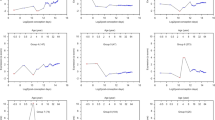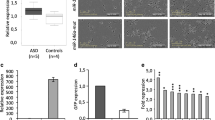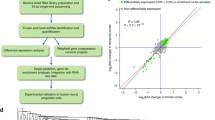Abstract
The development of the human brain starts in the first weeks of embryo differentiation. However, there are many relevant neurodevelopmental processes that take place after birth and during lifespan. Such a fine and changing scenario requires the coordinated expression of thousands of genes to achieve the proper specialization and inter-connectivity. In this context, microRNAs (miRNAs), which can modulate mRNA stability and translation, are gaining recognition for their involvement in both brain development and neurodevelopmental disorders. Therefore, cerebrospinal fluid (CSF) miRNAs should be perfectly differentiated in relevant age periods. In this study, we aimed to highlight the biological variability of miRNA expression in the CSF throughout life, which is also crucial for biomarker discovery in CNS pathologies, especially in children, where they are desperately needed. We analyzed the CSF microRNAome of 14 healthy children (aged 0–7.4 years) by smallRNA-Seq and compared it with previously published data in adults (N = 7) and elders (N = 11). miR-423-5p and miR-22-3p were overexpressed in the < 1 and > 3 years groups, respectively. Additionally, we detected 18 miRNAs that reached their highest peak of expression at different time-points during the lifespan and sets of miRNAs that were exclusively expressed in a specific age group. On the contrary, miR-191-5p showed stable expression in CSF from the first year of life. Our results remark the complex differential miRNA expression profile that can be observed through life, which underlines the need for including appropriate age-matched controls when the expression of CSF miRNAs is analyzed in different pathological contexts.

Graphical abstract




Similar content being viewed by others
Abbreviations
- <1:
-
Less than 1 year group
- 1-2:
-
From 1 to 2 years group
- >3:
-
More than 3 years group
- ADU:
-
Adult group
- CHI:
-
Children (individuals from 0 to 7.4 years old)
- CSF:
-
Cerebrospinal fluid
- CPDB:
-
ConsensusPathDB web tool
- ELD:
-
Elderly group
- EVs:
-
Extracellular vesicles
- KEGG:
-
Kyoto Encyclopedia of Genes and Genomes
- mRNA:
-
Messenger RNA
- miRNA:
-
MicroRNA
- RT-qPCR:
-
Quantitative PCR
- SmallRNAseq:
-
Small RNA sequencing
References
Jernigan TL, Stiles J (2017) Construction of the human forebrain. Wiley Interdiscip Rev Cogn Sci, 8
Ryan BM, Robles AI, Harris CC (2010) Genetic variation in microRNA networks: the implications for cancer research. Nat Rev Cancer 10:389–402
Ma Q, Zhang L, Pearce WJ (2019) MicroRNAs in brain development and cerebrovascular pathophysiology. Am J Physiol Cell Physiol, 317: C3–19
Blandford SN, Galloway DA, Moore CS (2018) The roles of extracellular vesicle microRNAs in the central nervous system. Glia. 66:2267–2278
Prieto-Fernández E, Aransay AM, Royo F, González E, Lozano JJ, Santos-Zorrozua B, Macias-Camara N, González M et al (2019) A comprehensive study of vesicular and non-vesicular miRNAs from a volume of cerebrospinal fluid compatible with clinical practice. Theranostics. 9:4567–4579
Godoy PM, Bhakta NR, Barczak AJ, Cakmak H, Fisher S, MacKenzie TC, Patel T, Price RW et al (2018) Large differences in small RNA composition between human biofluids. Cell Rep 25:1346–1358
Burgos K, Malenica I, Metpally R, Courtright A, Rakela B (2014) Profiles of extracellular miRNA in cerebrospinal fluid and serum from patients with Alzheimer’s and Parkinson’s diseases correlate with disease status and features of pathology. PLoS One 9:e94839
Murillo OD, Thistlethwaite W, Rozowsky J, Subramanian SL, Lucero R, Shah N, Jackson AR, Srinivasan S et al (2019) exRNA atlas analysis reveals distinct extracellular RNA cargo types and their carriers present across human biofluids. Cell. 177:463–477
Langmead B, Trapnell C, Pop M, Salzberg SL (2009) Ultrafast and memory-efficient alignment of short DNA sequences to the human genome. Genome Biol 10:R25
Dweep H, Gretz N (2015) MiRWalk2.0: a comprehensive atlas of microRNA-target interactions. Nat Methods 12:697
Kamburov A, Stelzl U, Lehrach H, Herwig R (2013) The ConsensusPathDB interaction database: 2013 update. Nucleic Acids Res 41:D793–D800
Fabregat A, Jupe S, Matthews L, Sidiropoulos K, Gillespie M, Garapati P, Haw R, Jassal B et al (2018) The Reactome pathway knowledgebase. Nucleic Acids Res 46:D649–D655
Kanehisa M, Furumichi M, Tanabe M, Sato Y, Morishima K (2017) KEGG: new perspectives on genomes, pathways, diseases and drugs. Nucleic Acids Res 45:D353–D361
Dyck LIV, Morrow EM (2017) Genetic control of postnatal human brain growth. Curr Opin Neurol 30:114–124
Silbereis JC, Pochareddy S, Zhu Y, Li M, Sestan N (2016) The cellular and molecular landscapes of the developing human central nervous system. Neuron. 89:248–268
Dubois J, Alison M, Counsell SJ, Lucie HP, Hüppi PS, Benders MJNL (2020) MRI of the neonatal brain: a review of methodological challenges and Neuroscientific advances. J Magn Reson Imaging. https://doi.org/10.1002/jmri.27192
Camacho MC, Quiñones-Camacho LE, Perlman SB (2019) Does the child brain rest?: an examination and interpretation of resting cognition in developmental cognitive neuroscience. Neuroimage. 212:116688
Lin J, Huang S, Wu S, Ding J, Zhao Y, Liang L, Tian Q, Zha R et al (2011) MicroRNA-423 promotes cell growth and regulates G 1/S transition by targeting p21Cip1/Waf1 in hepatocellular carcinoma. Carcinogenesis. 32:1641–1647
Xu J, He J, Huang H, Peng R, Xi J (2018) MicroRNA-423-3p promotes glioma growth by targeting PANX2. Oncol Lett 16:179–188
dos Santos MCT, Barreto-Sanz MA, Correia BRS et al (2018) miRNA-based signatures in cerebrospinal fluid as potential diagnostic tools for early stage Parkinson’s disease. Oncotarget 9:17455–17465
Elsharawy A, Keller A, Flachsbart F et al (2012) Genome-wide miRNA signatures of human longevity. Aging Cell 11:607–616
Wang X, Shi C, Pan H, Meng XJF (2020) MicroRNA-22 exerts its neuroprotective and angiogenic functions via regulating PI3K/Akt signaling pathway in cerebral ischemia-reperfusion rats. J Neural Transm 127:35–44
Wang Y, Zhao L, Kan B, Shi H, Han J (2018) miR-22 exerts anti-Alzheimic effects via the regulation of apoptosis of hippocampal neurons. Cell Mol Biol 64:84–89
Ma J, Shui S, Han X, Guo D, Li T, Yan L (2016) microRNA-22 attenuates neuronal cell apoptosis in a cell model of traumatic brain injury. Am J Transl Res 8:1895–1902
Jovicic A, Zaldivar Jolissaint JF, Moser R, Silva Santos M d F, Luthi-Carter R (2013) MicroRNA-22 (miR-22) Overexpression is neuroprotective via general anti-apoptotic effects and may also target specific Huntington’s disease-related mechanisms. PLoS One 8:e54222
Jauhari A, Yadav S (2019) MiR-34 and MiR-200: regulator of cell fate plasticity and neural development. NeuroMolecular Med 21:97–109
Jauhari A, Singh T, Singh P, Parmar D, Yadav S (2018) Regulation of miR-34 family in neuronal development. Mol Neurobiol 55:936–945
Kennerdell JR, Liu N, Bonini NM (2018) MiR-34 inhibits polycomb repressive complex 2 to modulate chaperone expression and promote healthy brain aging. Nat Commun 9:4188
Wu YC, Chawla G SN (2020) let-7-Complex MicroRNAs regulate broad-Z3, which together with chinmo maintains adult lineage neurons in an immature state. G3.
Chen J, Ouyang HUI, An X, Liu S (2019) miR-125a is upregulated in cancer stem-like cells derived from TW01 and is responsible for maintaining stemness by inhibiting p53. Oncol Lett 17:87–94
Zhang X, Zhong B, Zhang W, Wu JWY, Circular RNA (2019) CircMTO1 inhibits proliferation of glioblastoma cells via miR-92/WWOX signaling pathway. Med Sci Monit 25:6454–6461
Peng G, Yuan X, Yuan J, Liu Q, Dai M, Shen C, Ma J, Liao Y et al (2015) miR-25 promotes glioblastoma cell proliferation and invasion by directly targeting NEFL. Mol Cell Biochem 409:103–111
Herrera-Espejo S, Santos-Zorrozua B, Álvarez-González P, Lopez-Lopez E, Garcia-Orad Á (2019) A systematic review of MicroRNA expression as biomarker of late-onset Alzheimer’s disease. Mol Neurobiol 56:8376–8391
Huang Z, Shi J, Gao Y et al (2019) HMDD v3.0: A database for experimentally supported human microRNA-disease associations. Nucleic Acids Res 47:D1013–D1017
Yang SY, Choi SA, Lee JY, Park AK, Wang KC, Phi JH, Koh EJ, Park WY et al (2015) miR-192 suppresses leptomeningeal dissemination of medulloblastoma by modulating cell proliferation and anchoring through the regulation of DHFR, integrins, and CD47. Oncotarget. 6:43712–43730
Pierson J, Hostager B, Fan R, Vibhakar R (2008) Regulation of cyclin dependent kinase 6 by microRNA 124 in medulloblastoma. J Neuro-Oncol 90:1–7
Dai J, Li Q, Bing Z, Zhang Y, Niu L, Yin H, Yuan G, Pan Y (2017) Comprehensive analysis of a microRNA expression profile in pediatric medulloblastoma. Mol Med Rep 15:4109–4115
Venkataraman S, Alimova I, Fan R, Harris P, Foreman N, Vibhakar R (2010) MicroRNA 128a increases intracellular ROS level by targeting Bmi-1 and inhibits medulloblastoma cancer cell growth by promoting senescence. PLoS One 5:e10748
Maldonado-Lasuncion I, Atienza M, Sanchez-Espinosa MP, Cantero JL (2019) Aging-related changes in cognition and cortical integrity are associated with serum expression of candidate microRNAs for Alzheimer disease. Cereb Cortex 29:4426–4437
Manzano-Crespo M, Atienza M, Cantero JL (2019) Lower serum expression of miR-181c-5p is associated with increased plasma levels of amyloid-beta 1-40 and cerebral vulnerability in normal aging. Transl Neurodegener 8:34
Akers JC, Hua W, Li H, Ramakrishnan V, Yang Z, Quan K, Zhu W, Li J et al (2017) A cerebrospinal fluid microRNA signature as biomarker for glioblastoma. Oncotarget. 8:68769–68779
Rohlwink UK, Figaji A, Wilkinson KA, Horswell S, Sesay AK, Deffur A, Enslin N, Solomons R et al (2019) Tuberculous meningitis in children is characterized by compartmentalized immune responses and neural excitotoxicity. Nat Commun 10:3767
Saugstad JA, Lusardi TA, Van Keuren-Jensen KR et al (2017) Analysis of extracellular RNA in cerebrospinal fluid. J Extracell Vesicles 6:1317577
Waller R, Wyles M, Heath PR, Kazoka M, Wollff H, Shaw PJ, Kirby J (2018) Small RNA sequencing of sporadic amyotrophic lateral sclerosis cerebrospinal fluid reveals differentially expressed miRNAs related to neural and glial activity. Front Neurosci 11:731
Acknowledgments
We extend special thanks to the Department of Pediatric Emergency team at Cruces University Hospital for their collaboration in obtaining clinical samples: Yordana Acedo, Pilar Alonso, Beatriz Azkunaga, Yolanda Ballestero, Elena Daghoum, Ana Fernandez, Iker Gangoiti, Silvia Garcia, Borja Gomez, María Gonzalez, Edurne Lopez, Roser Martinez, Santiago Mintegi, Ohiane Morientes, Mikel Olabarri, Natalia Paniagua, and María Angeles Ruiz.
Funding
This work was supported by the Basque Government (IT989-16), the Spanish Ministry of Economy and Competitiveness MINECO (SAF2015-66312), and the Ramon Areces Foundation (FRA-17-JMF). We thank MINECO for the TenTaCles (Spanish Excellence Network in Exosomes) and the Severo Ochoa Excellence Accreditation (SEV-2016-0644).
Author information
Authors and Affiliations
Corresponding authors
Ethics declarations
Competing Interests
The authors declare that they have no competing interests.
Additional information
Publisher’s Note
Springer Nature remains neutral with regard to jurisdictional claims in published maps and institutional affiliations.
Rights and permissions
About this article
Cite this article
Prieto-Fernández, E., Lopez-Lopez, E., Martin-Guerrero, I. et al. Variability in Cerebrospinal Fluid MicroRNAs Through Life. Mol Neurobiol 57, 4134–4142 (2020). https://doi.org/10.1007/s12035-020-02011-3
Received:
Accepted:
Published:
Issue Date:
DOI: https://doi.org/10.1007/s12035-020-02011-3




